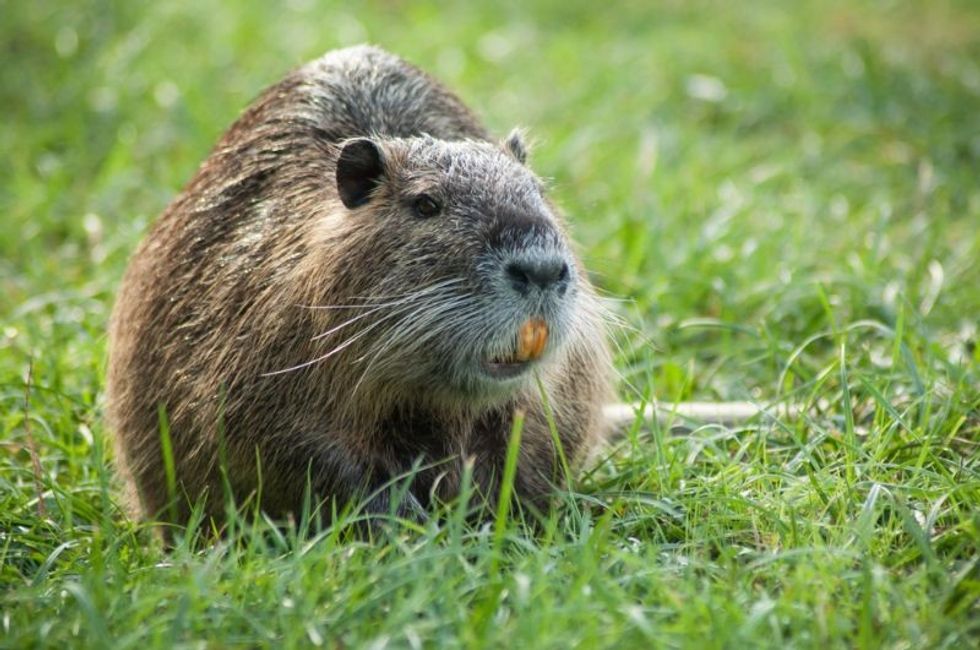Muskrat and nutria are both semi-aquatic rodents.
The scientific name of muskrats is Ondatra zibethicus. The nutria is scientifically known as Myocastor coypus.
Muskrats and nutria are native all over North America and South America. Muskrats also cover areas in the Arctic Ocean, Gulf of Mexico, Pacific Ocean and Atlantic Ocean. The nutria populates parts of Asia, Africa, and Europe but is native to North and South America.
If you are enjoying this article so far, why not check out other fun facts articles like muskrat facts and muskrat vs beaver here on Kidadl.
How are a nutria and muskrat different?
Though the two animals look very similar, they are not related. The difference between them is really obvious.
For starters, there is a huge difference between the sizes of the two rodents. Muskrats weigh around three to four lbs (1.3-1.8 kg) whereas, a nutria usually weighs around 11-12 lbs (4.9-5.4 kgs).
Another difference between the two rodents is their tail. Muskrats have thin and scaly tails that are flattened on the sides. On the other hand, nutrias have rounded and hairy tails that are similar to those of a rat.
A nutria has a lifespan of 6.5 years but can live up to 12 years in captivity. On the other hand, muskrats live for only around three to four years but can live up to 10 years.
Another way to distinguish between a muskrat and nutria is to take a look at their dens. Nutrias make burrows that are around the size of a volleyball in ditches and river banks.
They use foliage to make their beds! Muskrat burrows are made out of mounds of mud and plants and have underground entrances. Nutrias have partially webbed feet; however, muskrats do not have webbing between their toes.
How do you identify a nutria?
The appearance of a nutria (or Myocastor coypus) can best be described as an animal with small and short feet but a really hefty body. The body of the nutria is highly arched and is roughly 1.9 ft (60 cms) long. The tail of the animal itself is approximately 1ft (13 cms) long.
The average weight of nutria is 12 lbs (5.4 kgs). However, a male nutria can grow up to be just around 20 lbs (9 kgs), and a female can weigh roughly around 18 lbs (8 kgs).
While a capybara looks like a beaver with no tail, a nutria looks like a beaver with a rat tail!.
A nutria has brown or yellowish-brown fur that hides a dense greyish undercoat. Their forepaws have four well-developed and clawed toes and one rudimentary toe.
All five toes on the hindlegs are clawed, but four of them are webbed feet, and the outermost toe is free. The webbed feet make swimming easier for the semi-aquatic rodent. The hind legs of the nutria are larger than the forelegs.
The most notable feature of the nutria is the teeth known as incisors that are yellow-orange or orange-red on the surface! A nutria also has long white hairs for whiskers which are pretty difficult to miss.
Are nutria rats more aggressive?
Nutrias are extremely territorial animals. Whenever they feel trapped or cornered by people, they get really aggressive. An encounter with a nutria can lead to extreme physical harm not only to people but also to pets. During summertime, a number of encounters have been recorded between pets and nutrias.
Do not let your pets near a nutria. If your pet approaches a nutria, they are mostly like to attack your pets by biting and scratching them.
The injuries caused by these attacks can injure your pet seriously and result in wounds that might need stitches. If you and your pet ever get attacked by a nutria, seek medical help immediately.
Muskrats are equally aggressive and are known to attack animals and humans too.
If a nutria feels bothered by any animal, they try to flee the scene instead of acting out in an aggressive manner. However, taking precautions is a good idea.
It is best to steer clear of any animal that matches the description of a nutria. If you see any animals that look like muskrats or nutrias around your house, advise your family to stay away and make sure to keep your pets away from the animals. Call animal control.
Do nutria rats carry diseases?
Nutria rats are dangerous not only for their aggressive behavior but also because they are carriers of various diseases.
A nutria is said to carry lethal and harmful diseases such as tuberculosis and septicemia, which can be transmitted to both humans and animals. Nutria urine and feces may contain dangerous parasites, such as blood flukes, liver flukes, nematodes, and even tapeworms! Their feces can easily contaminate drinking water supplies and water bodies used for swimming by people.
Nutria rats also carry microscopic roundworms known as Strongyloides myopotami, which burrow into the skin and cause something known as a nutria itch. These worms live in the small intestine of the nutria but cannot reach the internal organs in humans.
The worms will die eventually, but that might take weeks to happen. During this time, the patient will suffer from inflammation and itching.
To a normal person, muskrats and nutrias may seem like rodents who are minding their own business, but it is best to steer clear of them. The two animals have different appearances, but both are equally dangerous.
Here at Kidadl, we have carefully created lots of interesting family-friendly facts for everyone to enjoy! If you liked reading about the nutria vs muskrat, then why not take a look at our articles on goat vs lamb meat or interesting facts about the colosseum?








